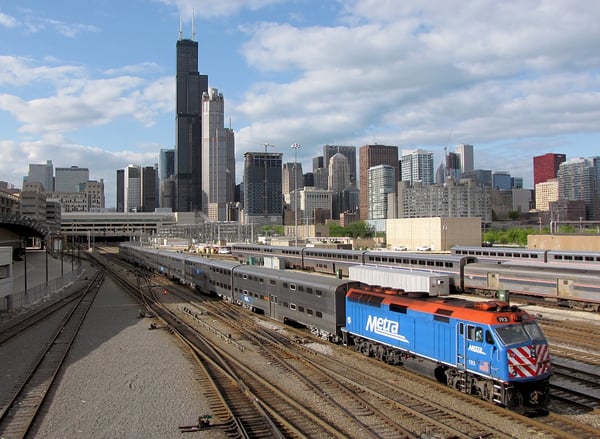 Railway infrastructure projects in the past were limited to just a few materials—such as wood, steel, and concrete—to create platforms for pedestrians and commuters. But over time, these materials no longer met the increasing weight and durability requirements of certain projects.
Railway infrastructure projects in the past were limited to just a few materials—such as wood, steel, and concrete—to create platforms for pedestrians and commuters. But over time, these materials no longer met the increasing weight and durability requirements of certain projects.
The Chicago Metropolitan Rail (METRA) consolidated several commuter rail lines in the mid-1980s, and nearly 40 years later, some of those stations are falling into disrepair. In April 2018, Chicago METRA announced their intention to upgrade and modernize several of these commuter stations, including the station in New Lenox, Illinois.
The New Lenox station was originally built in 1900 as one of many commuter stations along the rail line for the Chicago, Rock Island, and Pacific Railroad—a now-defunct Class I railroad. Ultimately, the station began to show the wear and tear of regular use and needed to be relocated to accommodate modern traffic needs and electric rail lines.
FRP: The Perfect Material for Chicago METRA
Struggling with several problems generated by a surrounding wetland area, loose soil, and sloping terrain, the New Lenox station required elevated rail bridges that could meet the curve of the existing rail while still remaining as light as possible. Ultimately, Fiber Reinforced Polymer (FRP) from Composite Advantage was chosen as the material to meet these challenges.
FRP consists of fiberglass, resin, and a core material product with a high tensile strength and increased design flexibility over traditional materials, allowing for variations in structure. Composite Advantage and Chicago METRA were able to design an FRP-based station that could overcome the challenges facing the project. Chicago METRA also found that FRP installs faster and easier than traditional rail materials, is environmentally resistant, and is still comparable in cost to traditional materials.
A Brand-New Rail Station
The new rail station, at 254 feet long, was created from 67 prefabricated panels, weighing only 400 pounds each. Despite sub-zero temperatures that might hinder more complicated operations, the installation took only three days and just three people to complete. Features of the new platform include:
- A 65-by-10 ft. platform, with a total area of 2650 sq. ft.
- Panels 4-by-10 ft., a depth of 10 in., and a weight of 9 psf.
- Panel trapezoid shape to follow the track radius after installation
- Non-slip epoxy aggregate overlay in grey
- Warning tiles bonded to panel structures,
- Guard rail affixed to the back of the platform
- Steel clips and anchors (to connect the panels to the steel support beams)
- Internal steel plate for rail attachments,
- Crowned panel with 1% slope for water runoff while meeting ADA requirements
As the New Lenox METRA station shows, FRP has proven itself a useful material for rail bridges and platform projects faced with hazardous terrain considerations, a need for lightweight material, and fast installation times.
For more information on the projects you can use FRP for and/or information on how it stands up against other materials, please download our eBook.
